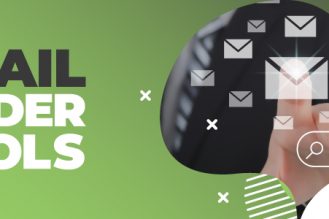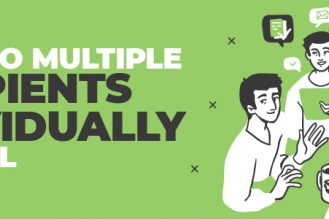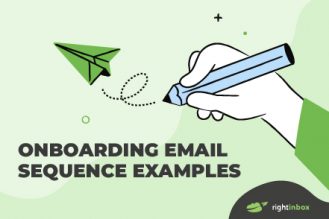Email personalization is one of the most effective ways that marketers can reach their customers — and not their trash folder.
In fact, 63% of customers expect personalization, and businesses that use personalization generate 40% more revenue than companies that don’t. These and the countless other positive email personalization statistics should drive you to one overwhelming conclusion: your business needed to start doing this yesterday.
That being said, if you’re new to the subject, email marketing and personalization can be an overwhelming task to take on. As a leader in all things email, that’s where we can help. Below, you will find our ultimate guide to email personalization for sales and marketing professionals. Read on to learn how to create effective campaigns that don’t get rerouted to the trash.
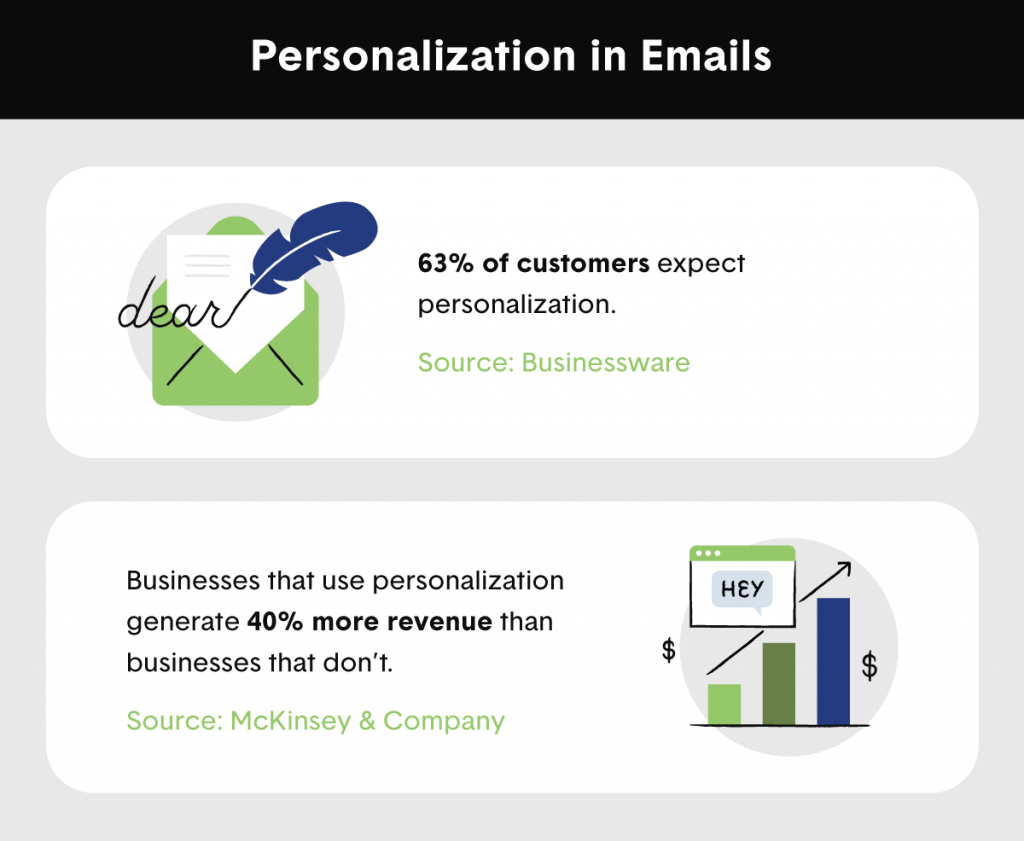
What Are Personalized Emails?
Personalized emails are how marketers customize their messaging for every individual customer on their email list. Businesses can do so by utilizing the data they have about their customers such as their name, products they have purchased, when and how much they visit the company website, and a host of other information.
Email personalization is a spectrum, and strategies can vary depending on specific business goals. One of the easiest ways to implement personalization is by including the customer’s name in the email subject line to catch their attention, while more advanced personalization can involve customizing the body of the email based on recent products the customer has viewed or social media engagement on a business page.
All of this amounts to a more relevant and engaging experience for customers. Rather than receiving a generic email that has clearly been sent en masse, customers will receive important information that has been tailored to their buying and browsing preferences.
3 Things to Personalize in an Email
Email personalization can include anything that your business has relevant data on, but some of the important elements to focus on are optimizing names, subject lines and body copy, and design.
Names
It’s important to customize not only the customer name in an email, but also the sender name.
The sender name, or the “from” name, can be changed to fit specific customer situations. Are you sending an email notifying a customer about a sale? Your company name as the “from” name is appropriate. However, there are situations in which changing the “from” name to an actual person — such as your head of marketing for example — could be strategic in increasing email open rates.
Also, it’s important to use the customer’s name multiple times throughout the email — “to whom it may concern” just doesn’t cut it. Add their name to the subject line, bring it to the body copy and possibly even sign off with it. Adding that extra personalization truly makes a difference.
Subject Lines
As with the name, or “from” section, the subject line is the most prominent and influential area to get your customers to open your emails.
There are a multitude of ways to customize a subject line, including adding the customer’s name, displaying relevant sales information, or any other personalized customer information. Making sure this section is personalized and relevant will drastically improve open rates.
Body Copy and Design
Once an email has been opened, impressive body copy and design is the final piece to truly “wow” your customers.
The body copy is where your relevant, targeted customer information is implemented. As we have learned, using the customer’s name is important, but also is the message of the email. This is where you can tailor your message based on the customer’s demographic, location, buying and browsing habits, and more to launch an effective marketing campaign.
Once targeted copy has been created, a way to send it over the top is with graphic design. Many of the top companies today are opting for graphic designs and infographics in their email campaigns rather than simply writing words in an email that are grammatically perfect. This adds an extra element to speak to and impress your customers.
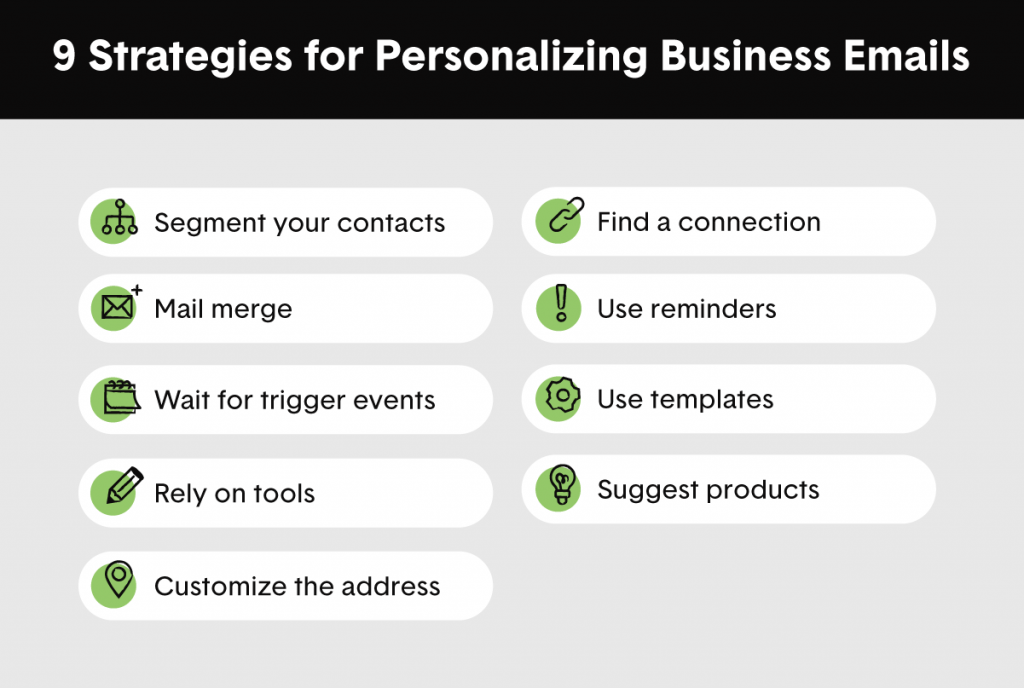
9 Strategies for Personalizing Business Emails
Now that you know the different parts of an email that can be customized, knowing how to personalize an email both in timing and content can set your campaigns off on the right track. Here are nine strategies to begin personalizing emails for your customers.
1. Customize Outgoing Gmail Address
Many small to mid-sized businesses fall into the trap of sending emails from improper email accounts.
For example, an email to a customer from johndoe@gmail.com looks unprofessional and is likely to go straight into the trash. Changing that instead to johndoe@johnscompany.com will warrant a much more receptive response.
Creating a professional email address is an important consideration to improve open rates from your customers, and can teach you how to personalize Gmail in the process.
2. Segment Your Contacts
Sending the same email to every customer in your email list is not an effective way to get results. Instead, segment your contacts to enhance relevance to every individual.
B2C businesses can segment their contacts by variables such as age, demographics, and geographic location, while B2B businesses can segment their contacts by variables such as business size and industry. The more specific you can get, the more personalized and relevant your emails can be.
3. Mail Merge to Personalize Mass Emails
There will no doubt be times when you need to send multiple personalized emails at one time, and unlike the clunky mail merge services of the past, Gmail mail merge makes this task easy.
Mail merging is the process of ‘merging’ a letter template with individual customer data that creates customized documents in a fraction of the time. Taking advantage of this allows you to personalize emails en masse and send them in bulk. Doing so makes it easy to effectively reach multiple people at once, shore up your Gmail contacts and personalize your Gmail.
4. Rely on Tools to Get the Information You Need
When in doubt, use tools to help gather information about clients. Products such as KISSmetrics, TowerData and Insightly can all help to gather and store information on customer preferences, demographics, browsing tendencies and more.
But you don’t need third-party tools to do all the heavy lifting, as there are plenty of opportunities for information gathering throughout the buyer life cycle. Collecting information during key events such as signing up for reward programs, registering for events, cart abandonment notifications, and free shipping opportunities are all great ways to build up your customer information.
No matter your data gathering methods, using tools to guide or supplement your customer data can be a big help for a business.
5. Find a Connection
Nowadays, a person’s email inbox can be flooded with marketing and promotional messages, so finding a connection can help your email stand out among the crowd.
If you are sending an email to a customer, relying on as specific qualifiers as possible regarding demographics or interests can be the key to a successful message. If you are sending an email to a business prospect, do some research on their LinkedIn or Twitter. Finding something in common such as mutual contacts, schools, or interests to include in your message can make a world of difference.
6. Reminders Make Conversations Special
Gaps and time lags exist in any form of digital communication, especially with email correspondence.
Email conversations can be disjointed, with responses being received in a few hours to even a few days. Therefore, it’s important to set email reminders to follow up with recipients. Email reminders make sure communication stays flowing while keeping track of important messages and conversations.
7. Use Templates
With so many personalization options for reaching out to clients and customers, it can be helpful to establish general templates from which you can customize.
Services such as Gmail allow you to create templates with the “Canned Response” feature which will allow you to save a variety of common email responses. This can save a tremendous amount of time by adding Gmail personalization options that can be used for future communication.
While it is helpful to establish and work from Gmail email templates, remember to add those personal touches to each message.
8. Wait for Trigger Events
Trigger events are predetermined actions or dates that allow businesses to send customized messages to their customers or clients.
For consumers, things like sending a promotional email for their birthday or asking for a review after they have made a purchase would fit the bill. For other businesses and potential clients, things like sending an email if their business received seed funding or the completion of an influential hire could be practical and unique.
Taking advantage of trigger events will make sure your business sends personalized information when it is most useful and important for your customer or potential client.
9. Suggest Product Recommendations
Suggesting product recommendations is a great way to stay top of mind with your customers who have recently visited your website or made a purchase.
Using third-party apps and website behavior tracking, send personalized emails based on the recipients’ recent actions on your website. By taking advantage of what the consumer was interested in, they are more likely to be engaged with your email and make a purchase.
When done properly, email personalization is one of the most effective ways to reach customers and clients. However, even the most effective copy and personalization techniques can be neutralized if you have no way to track who opens your emails.
At Right Inbox, we are experts at not only email personalization but email tracking as well. Check us out today to master your email campaigns.
Track emails, email reminders & templates in Gmail for free
Upgrade Gmail with the features it’s missing
Add to Gmail![Using Gmail: Every Marketer’s Guide to Email Personalization [Examples]](https://www.rightinbox.com/wp-content/uploads/Every-Sales-and-Marketers-Guide-to-Email-Personalization-hero-1-441x247.png)
